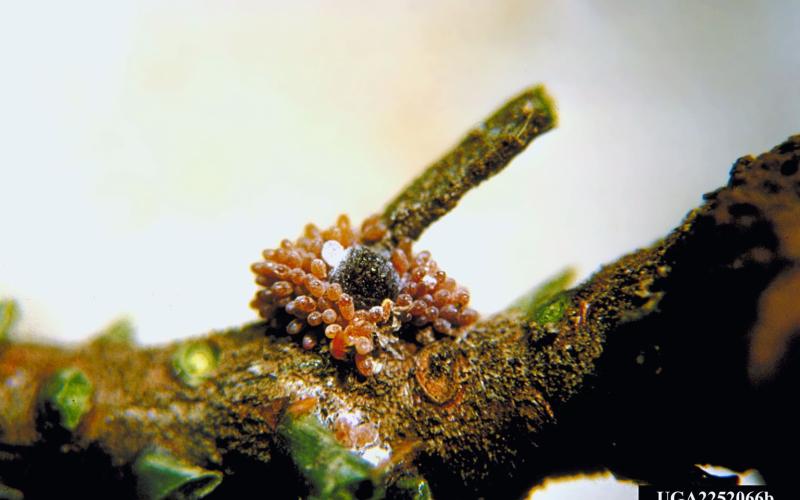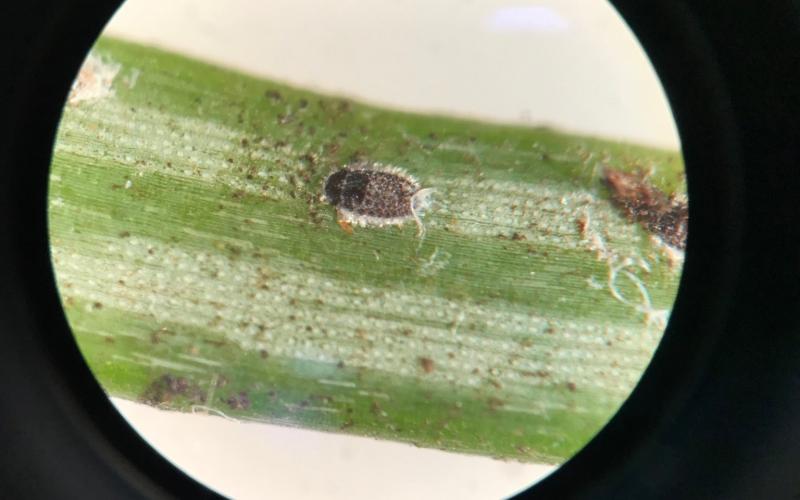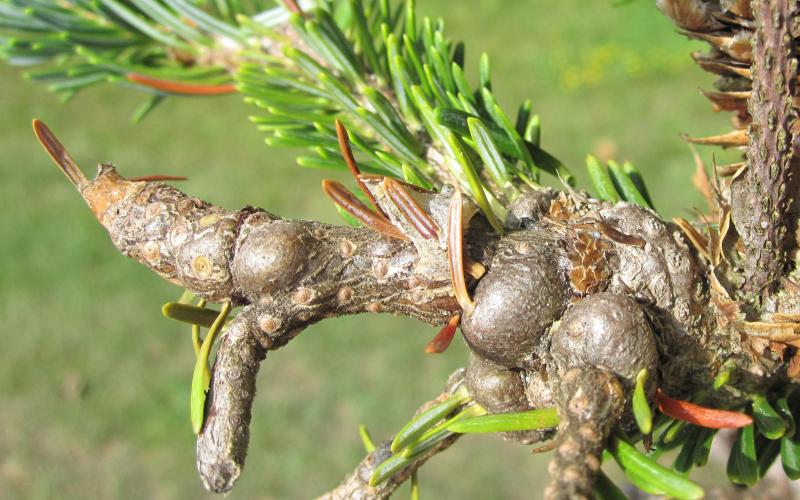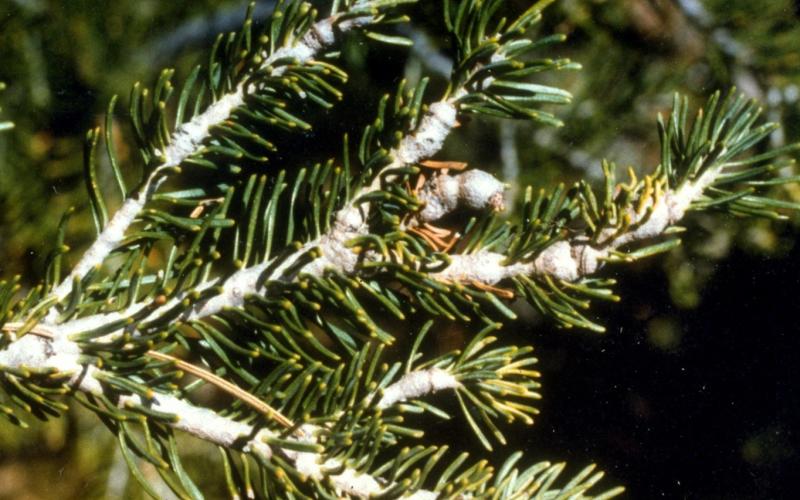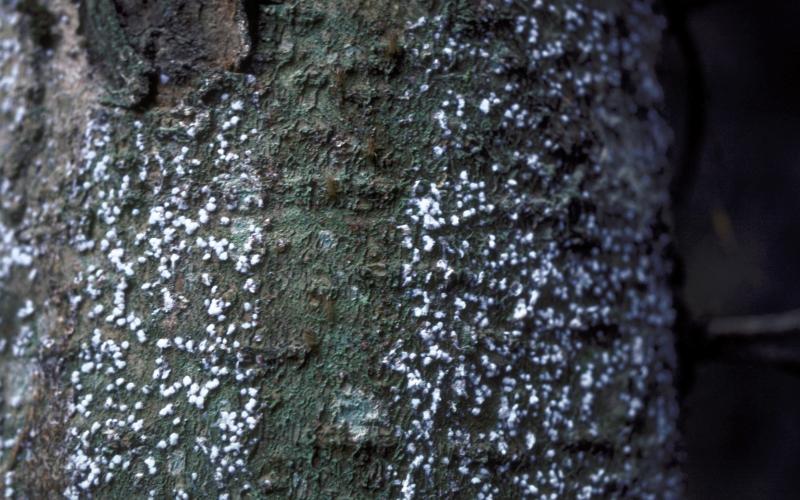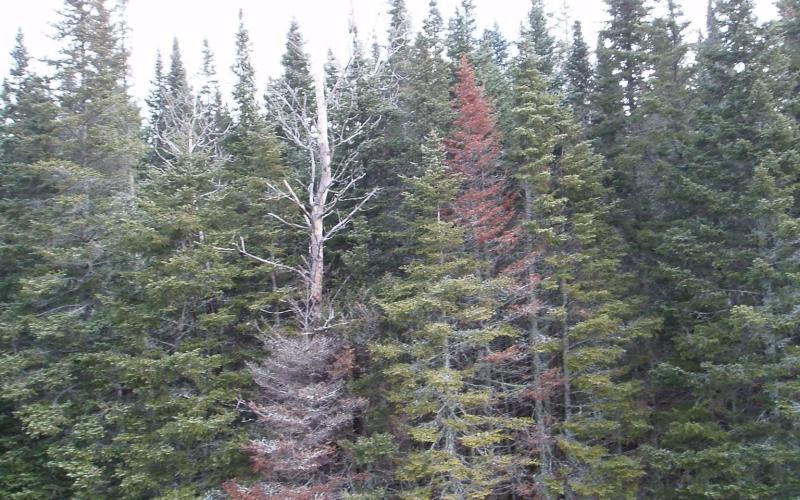Scientific name: Adelges piceae Ratzeburg
Native range: Europe
At Risk
All species of fir (Abies spp.) are potential hosts for balsam woolly adelgid. Fraser fir and balsam fir are especially vulnerable. This poses a particular risk to Christmas tree growers.
Distribution
Balsam woolly adelgid was introduced to eastern Canada and the northeastern United States in the early 1900s. It was discovered in the Pacific Northwest in 1929 and has since spread to that region, as well as small areas of California and the Appalachian Mountains.
Biology
Adelgids are sedentary for most of their life cycle. Eggs hatch into crawlers, the only mobile life stage, which disperse short distances by wind or animal movement. After settling on bark, crawlers insert their straw-like mouthparts to feed on sap and eventually mature into adult females.
In North America, only females are present, and reproduction occurs through parthenogenesis (without mating). As adelgids feed, they produce a white, woolly wax covering. Mature females lay eggs beneath this woolly covering.
There can be two to three overlapping generations per year, depending on latitude and elevation. Adelgids overwinter as immature nymphs.
Identification
Balsam woolly adelgids are tiny and difficult to see. However, the white, woolly substance produced by adults is more noticeable, especially on tree trunks just below where branches emerge. This woolly substance often remains on the bark year-round.
Symptoms of balsam woolly adelgid feeding is more likely to be noticed. Signs include:
- A flat top or weak terminal that is slanted
- Swollen twigs that drop needles (a condition known as "gouting")
- Dead or wilting shoots and branches
Regulatory Status: Regulated
There are no federal, state or local regulations related to balsam woolly adelgid in Minnesota. However, the state of Michigan regulates the import of potentially infested materials from infested states. If balsam woolly adelgid were found in Minnesota, regulations may be implemented.
What Can I Do?
Buy stock only from reputable nurseries and do not transport wild trees from infested areas. Contact the Minnesota Department of Agriculture via Report a Pest if you suspect balsam woolly adelgid.
Smarty Plants Podcast
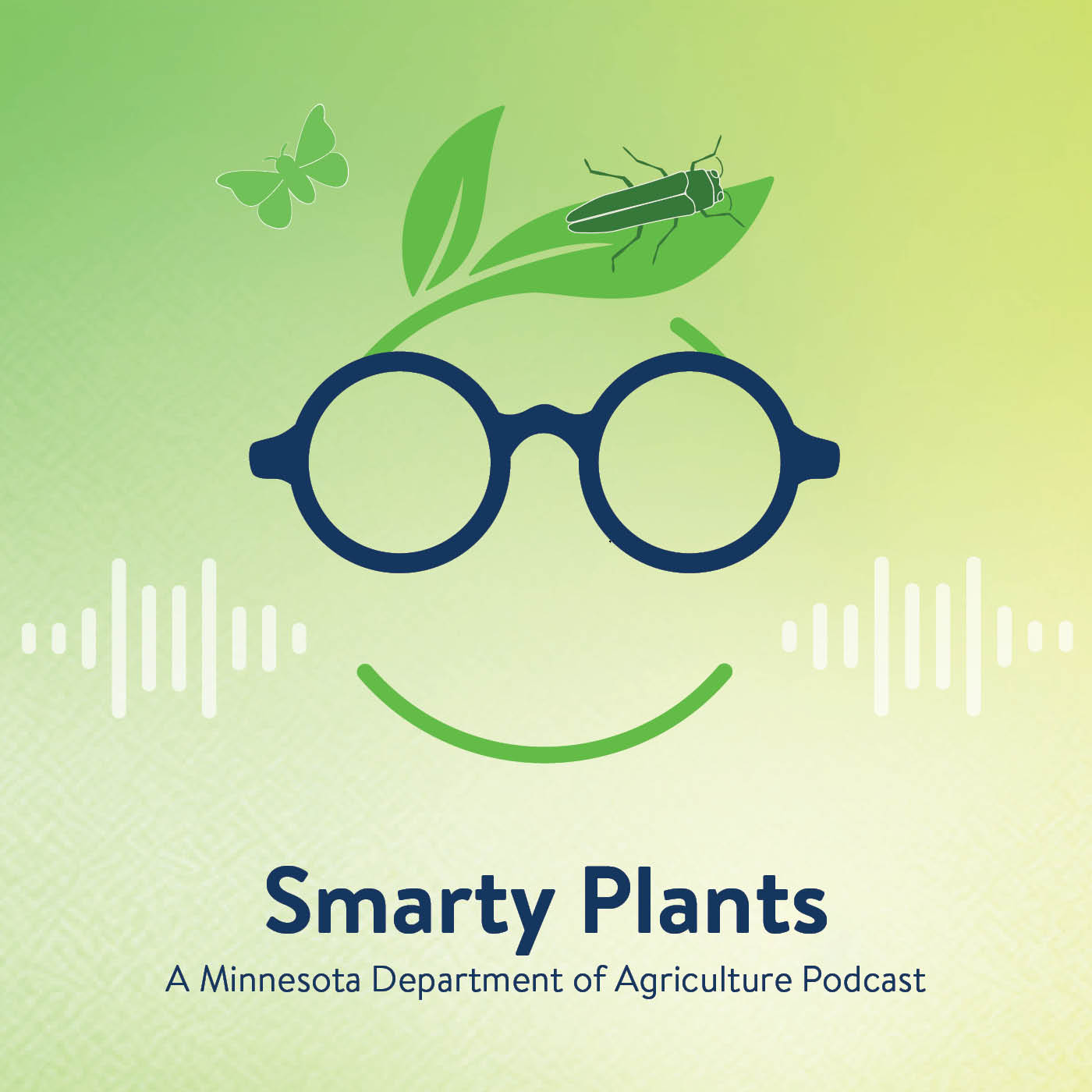
Discover Smarty Plants, the Minnesota Department of Agriculture's podcast that digs into the fascinating world of invasive species. Join expert guests as they share insights and solutions to protect our environment and agricultural resources. Visit Smarty Plants and start listening today.
